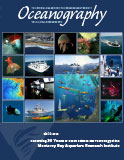First Paragraph
How can scientists most effectively introduce scientific ideas to a broader audience and influence political action? As the culmination of a semester-long ocean policy course at The University of South Florida College of Marine Science, students in the course, including the authors, traveled to Capitol Hill in June 2016 to visit the offices of several US representatives and senators to advocate for ecosystem-based fisheries management (EBFM). During the meetings, we employed knowledge and tactics we gained from the course and from advocacy at the local level. In our classes, we covered a variety of landmark legislation and frameworks that guide management of our ocean, including the Law of the Sea, the National Environmental Policy Act, and the Magnuson-Stevens Fishery Conservation and Management Act. Throughout the class and while in Washington, we honed our policy advocacy skills by meeting with legislative staffers as well as lobbyists and experts from the Pew Charitable Trust, the Ocean Conservancy, and an environmental law firm. These meetings taught us the efficacy of working at the local level, focusing a message on one to three succinct points, and delivering a message in a “problem-solution-ask” framework—clearly presenting a problem, proposing a tangible solution, and directly asking the listener to commit to a specific action.

